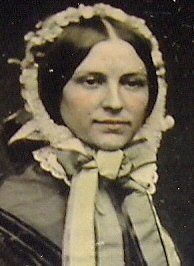Emily Lodge’s Story
In 2011, a Niagara Falls historian finds an 1891 poem about a neglected gravesite and resolves to learn more about the woman’s life.
Niagara Falls historian Michelle Ann Kratts believes “that it is possible to find anyone’s story.” She accidentally discovered Emily Lodge when she read an anonymous poem published in an August 1891 copy of the Niagara Falls Gazette. Soon after, she became obsessed in her efforts to find Emily’s story. Who was she? Why was she visiting Niagara Falls in, as fate would have it, the last days of her life?
Emily Helena Crummer was born in 1828 to Aikaterini Plessos and Major James Crummer on the island of Corfu, off the western coast of Greece. Her father was an army captain, and her mother was the first Greek woman immigrant to Australia. The family moved to Sydney, Australia when Emily was seven years old. The voyage took four months on a ship captained by Emily’s father. So began Emily’s “life of sea and seamen, of water and sky.”
Emily married Francis Lodge in Newcastle, Australia in 1848. Francis was a sea captain like Emily’s father. So, the couple spent much of their married life at sea. In those days, it was uncommon for the wives of sea captains to travel with their husbands after the honeymoon voyage. Seasickness and homesickness were common—even amongst experienced seamen. But Emily always joined Frances at sea, traveling to places like Honolulu, San Francisco, and China.
In 1863, Emily set sail on her last voyage traveling with Francis from Liverpool, England to San Francisco, California. It was the height of the California Gold Rush. Francis had been salvaging shipwrecks and “it was the treasures of the S.S. Golden Gate that [ultimately] brought Emily to Niagara Falls and her final resting place at Oakwood [Cemetery].”
Emily and Francis had only been at the luxurious Cataract House for nine days when she died of natural causes after a bout with Bilious fever. She died in the arms of her sea captain in Room 27--from which she could likely hear the thunderous rapids.
Emily may have caught her death at Cave of the Winds, a popular attraction that allowed visitors to stand under the Falls. She was only 36 years old when she died in 1864. She is buried in the Strangers’ Rest section of Oakwood Cemetery. Ironically, it’s also known as Travelers’ Rest.
An anonymous poem about Emily’s overgrown gravesite gave Kratts and a team of researchers clues to where she was buried. The poem was written 27 years after she died and then, amazingly, Kratts found it about 120 years later. Fittingly, the poet beckons “Niagara’s mighty wave” to “roll” and “sing to” Emily in her final sleep.
Hope L. Russell, Ph.D.


